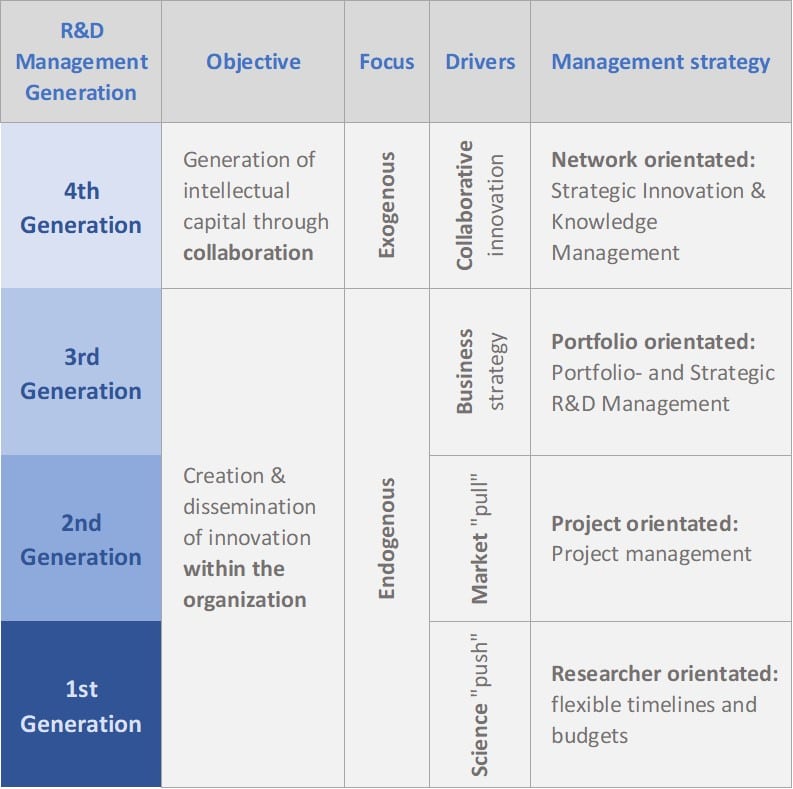Strategic R&D Management IV: Strategic R&D Management in the Crop Protection Industry
In the previous article in the series on Strategic R&D Management in AgChem and BioScience, I wrote about R&D in the Global Crop Protection Industry. In this fourth article of the series, I write on Strategic R&D Management in the Crop Protection Industry.
If this article provides value, please consider liking and sharing. Your feedback is invaluable, and helps new readers discover my work!
Strategic R&D Management in the crop protection industry
In the crop protection industry, Research and Development (R&D) of new active ingredients, optimisation of product portfolios and the introduction of innovative crop protection strategies are a necessity to ensure the provision of sufficient crop resources to meet the increasing needs of the world’s population, as well as enabling proactive responses to technology change, competition and changing customer demands.
“You can’t just ask customers what they want and then try to give that to them. By the time you get it built, they’ll want something new.” “
– Steve Jobs
Strategic R&D Management prioritises the integration of R&D with corporate and business objectives, while ensuring compliance with conventional Project Management parameters, such as budgets and performance indicators.
R&D Management
R&D management enables organisations to respond to external or internal opportunities, and to introduce new strategies, processes or products.
Figure 1: Summary of R&D management activities.
R&D management may be described as the process of designing R&D strategies, managing technical expertise (creation and retention) and innovation (creation and commercialisation), the leading of talent teams, and the transfer of knowledge and innovation within the company or network (Figure 1).
Strategic R&D management activities may include basic and applied research management, technical-, product – and process development management, talent management and strategic management, as well as IP- and innovation management.
R&D Management vs. Project Management
One of the main objectives of R&D management is to ensure that projects are completed successfully and within the defined timeframes and budgets – a basic tenet of conventional Project Management.
As for any management system, basic parameters such as budget- and performance requirements need to be managed with an appropriate level of discipline.
This is especially true for managing R&D teams and projects, where scientists may have a tendency to focus on the process more than on the needs of the customer.
However, due to the nature and complexity of R&D, and the need to provide an environment conducive to ongoing iteration (the implementation of experimental learning into the redesign of new trials) and innovation, the rigid application of conventional project management frameworks risks creating barriers to innovation.
For R&D projects, dedicated R&D management models are needed, capable of adhering to the need for efficiency and discipline while ensuring sufficient freedom for innovation processes.
R&D and Strategic R&D Management Models
R&D and Strategic R&D Management models may be described in terms of maturity: so-called first, second and third generation R&D Management models have the objective of creating and disseminating scientific knowledge and innovation internally within the organisation (endogenous focus) while fourth generation models introduce the concept of globalised generation of intellectual capital through collaboration across organisations (exogenous focus).
In first-generation R&D Management models, the objective is to facilitate scientific discovery with emphasis on the scientific intuition of the individual researchers. Project funding and prioritisation is governed by perceived scientific value (science “push”) and budget, rather than strategic parameters (market “pull”).
In these systems, researchers may operate with considerable autonomy and first-generation R&D Management models are often characterised by flexibility in timelines, budgets and prioritisation – often with low accountability.
Second-generation R&D Management models may be considered an extension of first-generation management models, and adopt a more market-orientated strategy for prioritisation.
Standard Project Management frameworks (such as key performance indicators, output-based KPIs, and binary “gated” decision-making processes) are typically used on a project-by-project basis to ensure accountability and compliance with budgets and timelines.
With the emergence of increasingly large crop protection corporations, the need arose for strategic management models capable of facilitating the interaction between R&D and Business units, in order to ensure a strategically balanced product portfolio.
Accordingly, third-generation R&D Management models are portfolio orientated, driven by business strategy, and prioritise the integration of R&D with corporate and business objectives.
To ensure compliance with strategic objectives, dedicated R&D Management techniques (such as Iterative Gate processes and Inclusive Management Frameworks) are typically implemented.
Increasing globalisation, including acquisitions, collaborations, and licensing agreements, challenge existing R&D Management models with respect to exogenous activities outside the organisation. In the current consolidation climate, significant opportunities arise outside traditional endogenous company restraints.

Figure 2 : Summary of R&D management models.
In a world of globally distributed knowledge, companies are no longer able to rely entirely on their own research, but are increasingly dependent on networking as a source of innovation.
Global acquisitions, collaboration, and licensing agreements increasingly require global R&D Management strategies, which may be described as the process of designing R&D strategies and processes across multi-cultural and multi-lingual settings.
To utilise these opportunities, global corporations are increasingly making use of fourth-generation R&D management models, with the objective of generating intellectual capital through external collaborations.
These fourth-generation models are network-orientated and driven by collaborative innovation. In addition to existing Project Management and Strategic R&D Management techniques, strategic innovation and knowledge management methods may be implemented to ensure the synergistic integration of R&D strategies across organisations, cultures and fields of scientific endeavour.
For globally orientated organisations, fourth-generation R&D Management models utilise the advantages of collaborative innovation, including synergism between internal and external R&D teams, the reduced cost of conducting research and development and shared market research and market reach.
In addition to the need to train scientists and managers in cross-cultural communication, fourth-generation models and the globalisation of R&D Management may require additional considerations, such as:
- the post-merger integration (or dissolution) of R&D groups as well as decisions regarding their location or relocation
- the realignment of innovation strategies
- the introduction of R&D networks and virtual R&D Management systems
- the transfer of technology and the sharing (and retention) of expertise, and
- the introduction of cross-cultural R&D innovation- and performance index parameters
All the described R&D management models have the objective of improving R&D performance and productivity, providing structure to the R&D process, and ensuring a R&D environment in which the complexity of R&D can be managed.
Through the application of dedicated management models, R&D Management is crucial for the design of R&D strategies, the management of technical expertise and innovation, the leading of talent teams, and the transfer of knowledge and innovation within the company or network.
In the fifth article in this series on Strategic R&D Management in AgChem and BioScience, I write on Managing Innovation Processes in R&D.
_
Thanks for reading – please feel free to read and share my other articles in this series!
The first two books in the LABCOAT GUIDE TO CROP PROTECTION series are now published and available in eBook and Print formats!
Aimed at students, professionals, and others wishing to understand basic aspects of Pesticide and Biopesticide Mode Of Action & Formulation and Strategic R&D Management, this series is an easily accessible introduction to essential principles of Crop Protection Development and Research Management.
A little about myself
I am a Plant Scientist with a background in Molecular Plant Biology and Crop Protection.
20 years ago, I worked at Copenhagen University and the University of Adelaide on plant responses to biotic and abiotic stress in crops.
At that time, biology-based crop protection strategies had not taken off commercially, so I transitioned to conventional (chemical) crop protection R&D at Cheminova, later FMC.
During this period, public opinion as well as increasing regulatory requirements gradually closed the door of opportunity for conventional crop protection strategies, while the biological crop protection technology I had contributed to earlier began to reach commercial viability.
I am available to provide independent Strategic R&D Management as well as Scientific Development and Regulatory support to AgChem & BioScience organizations developing science-based products.
For more information, visit BIOSCIENCE SOLUTIONS – Strategic R&D Management Consultancy
_





